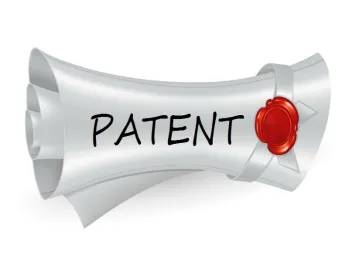Negative limitations, using words like “not”, “without”, or “excluding” in a patent claim, understandably make patent practitioners and clients nervous. Generally, positive limitations are preferred and negative limitations are to be avoided. Why is that?
Scope of positive claim limitations affects the claim in the same manner as it does the limitation itself. A narrow claim limitation, positively stated, makes the claim as a whole narrower than a broader claim limitation affecting the same subject matter. A broad claim limitation, as you might expect, makes the claim as a whole broader than a narrower claim limitation.
Negative limitations behave the opposite of this. Excluding a narrow amount of subject matter makes the claim broader than excluding a broader amount of the same subject matter. Excluding a broader amount of subject matter narrows the claim more so than excluding a narrower amount.
Claim scope analysis is vital when crafting a claim. The above characteristics of negative claim limitations suggest a test for claim scope when using negative claim limitations. Is what is being excluded narrow or broad? Is what remains, i.e., what is still included in the claim, narrow or broad? If the answers to these tests conform to the above characteristics of negative claim limitations, that suggests analysis is correct, and the patent practitioner now has a solid understanding of the scope of the claim and can proceed with writing more claims, etc. If the answers to these tests are inconsistent with the above characteristics of negative claim limitations, or are counter to the intended scope of the claims, this suggests the claims should be rewritten or reworked, as there is a strong possibility of confusion for claim interpretation, or argument over claim scope. That is an undesirable situation for patent prosecution and possible later tests in courts.
Whenever negative claim limitations are contemplated, it is wise to consider whether there are positive claim limitations that can more safely express a desired claim scope. Instead of a claim limitation of “without requiring X”, would “independent of whether X is present” work? Instead of “A and not B”, would a “B-less A” or “non-B A” do the job?
A narrower, more extensive set of positive limitations could make it clear that the excluded element is not used. Another solid tactic is to use well-written definitions in the specification to show that A is not equivalent to B, so that when the claims recite A, it is clear that the claims exclude B. Claim amendment during prosecution to include part of this definition in the claim could progress the examination without needing negative limitations in the claim.
Sometimes, during patent prosecution, an examiner will turn up some close art, and the patent practitioner may need to carve around the art by amending the claims to include negative claim limitations specifically excluding some aspect of the close art. An explicit limitation of “excluding X” or “without performing/executing/adding/etc. Y”, when the art shows X or Y, might well suffice, provided the above cautions are observed about scope. But it could also be worthwhile to try writing variations on this, using positive limitations or positive ways of stating negative limitations, as outlined above, and then test each of these to see which one is most suitable. One could even try amending each of three independent claims using a different tactic, to preserve breadth of scope.
Takeaways
• Exercise caution with negative claim limitations.
• Try using positive limitations with various wordings instead of negative claim limitations.
• Definitions in the specification can be brought into the claims to exclude an interpretation or possibility.
• Amending multiple independent claims using different tactics can preserve breadth of scope.
• Test scope of various possibilities for claim limitations. Scope, as a whole, for negative claim limitations behaves opposite that of positive claim limitations, i.e., the narrower the exclusion, the broader the claim.




 />i
/>i

